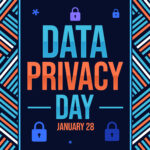Celebrating Data Privacy Day: Ensuring ethical agentic AI in our daily interactions

Both AI agents and agentic AI are becoming increasingly powerful and prevalent. With AI agents, we can automate simple tasks and save time in our everyday lives. With agentic AI, businesses can automate complex enterprise processes. Widespread AI use is an inevitability, and the question going forward is not if we’ll use the technology but how well.
In a world where AI takes on more responsibility, we need to know how to measure its effectiveness. Metrics like the number of human hours saved or the costs reduced are, of course, important. But we also need to consider things like how ethically and securely our AI solutions operate. This is true when adopting third-party solutions and when training AI in house.
Trump is back -- here’s what it means for IoT

On January 20, Donald Trump was inaugurated to the highest office in the United States of America. If his last four-year term contains hints about his next four-year term, the tech sector can expect more protectionist policies reflected in tariffs, trade wars, and production.
For connected devices in the Internet of Things, this means flow-on effects in manufacturing supply chains and potentially stricter cybersecurity oversight. Let’s explore.
Hyper-personalization is here -- but are organizations ready?

The rising demand for relevant, convenient and personalized customer experiences across all sectors has put modern organizations under pressure to adapt. McKinsey reports that almost three quarters of buyers now expect personalized interactions. The choice is clear: either embrace personalization, with individual offers or tailored updates based on previous habits, or risk falling behind competitors with a standardized approach.
Many organizations already do this well. From personalized Netflix movie recommendations to tailored Google adverts built on previous searches, organizations are able to delight customers with tailored services.
Data privacy in 2025: The resurgence of biometric security, a fleeting forecast for federal data privacy regulations, and the return of the wild west of AI

The transition from 2024 to 2025 brings a lot of uncertainty, speculation, and hopefully some optimism for the world of data privacy.
As technology continued to innovate, securing data grew more complex and consumers grew more concerned over how their information was being used. Regulatory changes are coming soon, with several states providing their own data privacy standards in anticipation of a shifting focus within the U.S. federal government, creating an important inflection point to set the tone for the future of data privacy and security.
The UK's cybersecurity landscape: Key trends and challenges for 2025

Almost every single organization, large or small, is acutely aware of the need to implement robust security measures. However, this is easier said than done. As the threat landscape continues to evolve, only heightened by tools such as AI, it can be difficult to stay ahead and ensure appropriate security measures are in place. There are a lot of security tools out there, and many organizations have tried to implement security measures and are now overwhelmed with an influx of information trying to figure out how best to manage it.
However, though it may not be the easiest task, it’s certainly one worth doing right. So, as we move into 2025, what are the main trends that organizations need to be aware of and how can they use this knowledge to stay protected?
2025: The year of evolution in identity security

The year 2025 will not be a revolutionary one, it will be evolutionary, with developments coming into effect that were necessitated by events and happenings in 2024, and solutions to address these events reaching maturity levels that allow an appropriate, comprehensive response. With threats like ransomware certain to continue, identity resilience is going to become more important in the year ahead and, as such, identity will become the critical component of security.
This shift in emphasis started to take place in 2024, but there will be a greater focus on it among business leaders in the year ahead as they start to understand that identity is one of the biggest threats to any organization as it is a key vector for attackers.
Active metadata: The key to unlocking data's full potential

Data-driven organizations are increasingly struggling with the limitations of passive metadata practices. These traditional approaches quickly become outdated, leading to inaccurate insights and poor decision-making. Passive metadata often remains siloed, making it challenging to integrate and understand relationships between datasets. As a result, organizations face significant hurdles in achieving data agility -- the ability to adapt how information is interpreted and rapidly acted upon.
Active metadata management solves these challenges by providing a dynamic, intelligent layer that enables businesses to improve their decision-making processes and maintain a competitive edge in an increasingly data-centric environment.
Companies have to address the risks posed by GenAI

Even though it’s only been two years since the public demo of ChatGPT launched, popularizing the technology for the masses, generative AI technology has already had a profound and transformative effect on the world. In the years since the platform’s launch, critics have regularly pointed out the risks of generative AI and called for increased regulation to mitigate them. Once these risks are addressed, companies will be more free to use AI in ways that help their bottom line and the world as a whole.
We must remember that artificial intelligence is a powerful tool, and as the adage goes, “With great power comes great responsibility.” Although we have seen AI make a positive impact on society in several ways -- from boosting productivity in industrial settings to contributing to life-saving discoveries in the medical field -- we have also seen wrongdoers abuse the technology to cause harm.
2025 predictions -- Navigating through the challenges and opportunities ahead

As we head further into 2025, the global economic landscape remains a mix of challenges and potential shifts that will shape markets and industries worldwide. From high interest rates to the evolving impact of AI, there are several key factors that will define the year ahead. While there will be friction in some areas, persistence, agility and out-of-the-box thinking will ensure a competitive edge.
The economic slowdown in the European Union (EU) and the UK will likely persist into 2025, with high interest rates continuing to weigh on consumer spending and business investment. Central banks’ inflation-control measures are dampening growth, making a swift recovery unlikely. Governments will be under pressure to boost the economy through fiscal policies, increasing social program spending and infrastructure investments. The success of these efforts will depend on how quickly businesses adjust to a more cost-conscious climate and how consumers respond to rising financial pressures. The balancing act between controlling inflation and sustaining growth will be the key to success in 2025.
Harnessing AI to drive team efficiency and optimize project management

As organizations strive for greater project management efficiency, AI can be a powerful tool to identify inefficiencies, anticipate risks, and improve decision-making. From content creation to data summarization, generative AI (GenAI) transforms how teams work by quickly creating valuable outputs with less effort. For example, a daily sprint report that might take a team member up to an hour to compile can be generated in seconds by AI that is trained to summarize data from multiple sources.
Over time, small efficiencies like these are multiplied, leading to extensive time savings across teams and organizations. By handling repetitive tasks, GenAI models give teams more time to focus on collaboration, strategic thinking, and creative problem-solving.
In large companies, particularly those with high staff turnover or matrixed, cross-functional teams, new team members often face a steep learning curve when adapting to the team’s specific tools and processes. By functioning as a copilot, an ever-present, always-patient expert on all things project management, GenAI can provide answers from both static documentation and real-time data. When getting up to speed in a new role, a manager could ask a GenAI copilot what is happening across a team that could, over time, negatively impact the projects they are working on. The feedback given can help address these issues, reduce the manager’s learning curve, and provide on-the-job training that delivers immediate, actionable insights.
How to unlock innovation safely in the AI revolution

Organizations are caught up in a whirlwind of AI adoption, whilst struggling to ensure their security standards can match up. And as the rush to integrate AI into business processes continues into 2025, the time to safeguard its deployment is now.
To-date much of the security discussion around AI has focused on protecting against AI-powered threats. However, an overlooked aspect of AI security lies in the internal workings of AI systems, notably the hidden layers in machine learning models. Understanding the evolving threats to these internal structures is crucial to ensuring the safety and integrity of organizations seeking a security foothold in the current storm of AI adoption.
How can organizations mitigate the security risks caused by human error?

There’s a great quote which goes along the lines of “To err is human, but to really foul things up requires a computer”. When applied to cyber security this can fit very well, as human error is a major contributing factor towards data breaches. People are inherently prone to making mistakes, and when working with complex technology the risks are massively amplified. It’s hardly surprising, therefore, that almost three-quarters (74 percent) of CISOs view human error as the most significant cyber security vulnerability, according to a recent study.
Examining the issues relating to cloud security more specifically reveals a wide variety of people-problems. From technology misconfiguration and phishing to multi-factor authentication (MFA) errors, social engineering, and alert fatigue, exploiting our shared propensity for making mistakes has become a focal point for threat actors.
Navigating challenges and opportunities of cloud migrations in 2025

As 2025 approaches, the role of cloud migrations in organizational strategy continues to intensify. In our current era of accelerated digital transformation, businesses face the dual challenge of optimizing their operations and navigating complex compliance requirements.
Cloud technologies stand at the forefront of this transformation, offering scalability, operational flexibility, and data management capabilities that are essential for success in today’s digital economy. In addition, the evolution of data sovereignty laws requires businesses to adjust how they handle and store data and evaluate the infrastructures that support their global operations.
Savvy security needs SASE: Addressing the security challenges organizations are grappling with

With the threat landscape becoming increasingly sophisticated, companies need agile approaches to improve their defenses and mitigate risks. After all, hackers are adapting their strategies and introducing new tools and technologies to improve their success rates. The resulting rise in cyber-attacks is evident in Xalient’s latest research report ‘Why SASE is the Blueprint for Future-proofing Your Network in 2025 and Beyond’, where a staggering 99 percent of respondents say they have experienced an attack in the last 12 months.
It is no surprise that cyber security is gaining attention from across the C-suite, with 58 percent of CEOs considering cyber-attacks a very big threat to business operations, as PwC's 25th CEO Survey finds. With security moving further up the boardroom agenda, security teams are under greater scrutiny as they work to safeguard the company, its data and its employees. But what are the biggest security challenges and how can security teams improve the security posture of their organisations?
A hybrid approach could put your organization on cloud nine

Until recently, many organizations’ ‘cloud-first’ strategies in reality meant ‘cloud-only’ (and more specifically, public cloud). Indeed, it wasn’t really a strategy, rather more an aspiration.
However, fast forward to today and many organizations are realizing that public cloud providers can’t fully meet all their needs and priorities. In fact, most organizations will never be fully on the public cloud for a number of reasons:
© 1998-2025 BetaNews, Inc. All Rights Reserved. About Us - Privacy Policy - Cookie Policy - Sitemap.
